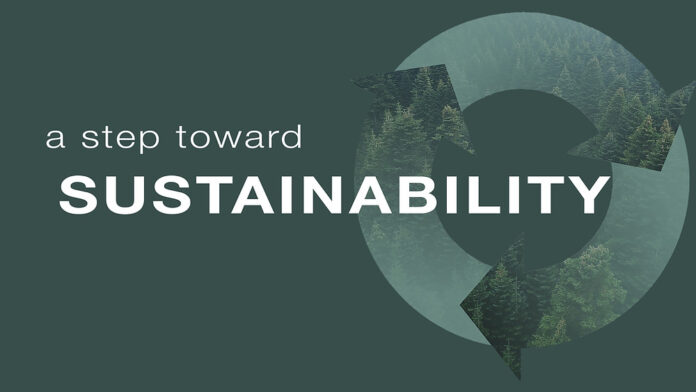In recent years, zero-waste, sustainability, and net-zero have become both a real challenge and goal of companies around the world. Many of them search for effective ways to support environmental protection and contribute to stopping climate change. How to become a sustainable organization? What activities are worth undertaking? What is the added value of building an eco-friendly organization? Here are some ideas and inspirations on how to become a sustainable, eco-friendly company.
Sustainable Development – the goal for the coming years

The concept behind Sustainable Development is to meet the needs of the present generation without compromising future generations’ abilities in meeting their ones. With that in mind, The European Commission is implementing a “European Green Deal” to reduce greenhouse gas emissions in many sectors, among others in the energy and transport industries. The aim is to reduce gas production by more than 50% by 2030 compared to 1990.
What measures are organizations taking to go eco?
Enterprises that are aware of climate change strive for the status of green organizations. Many companies try to minimize the negative impact of their operations on the environment. Activities such as waste segregation, wise energy management, and building an organizational culture with a focus on raising ecological awareness are nowadays a standard. Here are some of the best practices and activities you can undertake.
Steps towards sustainability

1. Good practices during home office
During the pandemic, there was a lot of research on the impact of remote work on the natural environment. While traffic jams in cities have decreased, there was more traffic online. While working from home, we also leave a carbon footprint. Still, employees can take measures to minimize it e.g., by using standard definition streaming instead of HD. Keeping a camera on during online meetings is recommended to maintain better contact and improve communication. On the other hand, does each meeting require 50 participants to keep a camera on for, let’s say, 90 minutes? It is worth looking for a golden means to find the best option. As per available resources, using the camera wisely allows us to reduce the carbon footprint by 96%.
2. Supporting local initiatives
Many organizations operate globally, but their local presence lets them take part in interesting projects. Many local organizations or communities need support. For example, one of the IT companies in Poland, JCommerce, joined the campaign of building city apiaries in the city of Katowice. An apiary on the company’s roof turned out to be a great idea for protecting bees and educating employees.
Find out more about JCommerce: https://www.nearshore-it.eu/
3. Supporting sports activities

Although many companies operate in a remote or hybrid work model, this also creates a chance to integrate through sport. Companies can encourage their employees to occasional bicycle commuting or set up a challenge related to collecting kilometers run or cycled. During such an action, they can raise funds for a charity. As you can see, being active is a reasonable step towards sustainability.
4. Using the potential of the technology
Cloud is one of the most important tech trends, recognized annually by Gartner. A cloud-based infrastructure not only can bring innovation to your business. It will also help you to make it more eco-friendly. According to the Accenture research “The Green Behind the Cloud”, reducing CO2 emissions by migrating to the cloud can have a similar effect to removing 22 million cars from the roads! Even a partial cloud migration can reduce CO2 emissions by about 84%. Companies that want to go green should therefore consider migrating to the cloud.
5. Wise investment in an IT equipment
The technology develops rapidly. This makes people try to keep up with it by buying the newest computer hardware. When selecting the devices, take their efficiency and longevity into account. Today, more and more companies, including small and medium-sized businesses, are choosing Apple devices. Macs and iPhones have a beautiful design and are exceedingly productive. Apple devices also perform well in a hybrid IT environment (especially when using enterprise-class management solutions, such as the Jamf Pro system).
Added value of running sustainable business

Building an eco-aware company can bring many additional benefits. Some of them include:
- Engaging organizational culture – one of these can be the organizational culture with which people want to identify. The most important thing is authenticity but remember that most employees need to actively support various initiatives outside their job.
- Minimizing staff turnover – By involving your employees in CSR activities, you build a community and have a real chance to influence their engagement. Employees who identify with the company tend to stay in the company.
- Real impact on the environment – every small step brings us closer to the goal of a healthy environment and a good climate for future generations.
Case study – JCommerce builds an urban apiary
Recently municipal beehives have become popular as people are getting increasingly aware of potentially dreadful the results of bees’ extinction could be.
JCommerce is an IT software development company from Poland, providing services in a near shoring model. The company has decided to set up an urban apiary on the roof of its office in Katowice thereby joining the movement of building apiaries in cities. Urban areas provide bees with good living conditions – this is due to the lack of dangerous pesticides used in agriculture (which are to be blamed for the phenomenon of mass extinction of the bees). The temperature in cities is also a bit higher than in the countryside, and the winters are milder. Thanks to this, the flowering period of plants is about 30% longer. The apiary is being taken care of by the company’s software tester, who is privately a beekeeper.
Summary
Today choosing specific solutions in business allows us to have an impact on the environment. Ensure that your corporate culture is focused on ecological awareness and use the potential of the technology wisely. This way you can contribute to building a better world. Not only for ourselves, but also for future generations.









